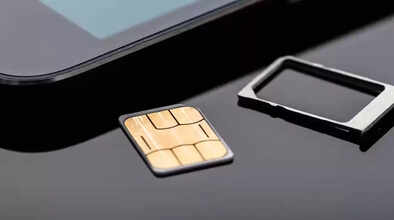SIM Card: Have you ever wondered how a small SIM card can be used to make calls across the world?

SIM Card Technology: Calling system is amazing. It connects everyone, be it friends or strangers. In the olden days, letters used to connect people. Today, 'call' is carrying on this tradition. Or rather, a small SIM is carrying on this tradition. Have you ever wondered how a small SIM can make calls across the world? How can we connect with each other? After all, how does this small SIM work? What is the technology behind it? Let's know in detail.
How does a SIM card work?
You must have noticed that when you insert a new SIM card in your phone, after some time, 'signal' or 'network' starts appearing in your phone. This signal is the key that connects you to the world. You can call someone only after the network comes.
Your SIM card actually makes a connection with the nearest tower of that mobile company. When the signals in your phone are full, it means that the connection of your SIM with the tower is absolutely solid.
Tower connection to satellite: How does your voice reach?
These mobile towers are not just pillars standing on the ground, but they are part of a big network. These towers are directly connected to satellites, and satellites connect towers across the world. When you make a call, your voice first reaches the tower near you, then, through satellite, it reaches the tower near the person you are calling.
You must have often heard that 'the person's phone is out of coverage area.' It simply means that the person is not near any mobile tower right now, so your voice or signals are not reaching them.
Does SIM only indicate identity? No, it does a lot more!
The full form of SIM is 'Subscriber Identity Module'. It not only reveals your identity, but also stores some important information:
Your mobile number: We already know this
IMSI (International Mobile Subscriber Identity): This is a special number that registers your identity with your network provider.
IMEI (International Mobile Equipment Identity): This is a unique code of your phone, which is different from the SIM, but works together.
Security keys: These are for encryption so that no third party can listen to your conversation.
Contacts and SMS: Some contacts and SMS were also stored in old SIM cards.
All this information together decides who you are, which network you are connected to, and where you have to call.
The 'money' and 'scheme' behind calling
When you talk on the phone, telecom companies charge you for it. We pay this money in the form of a 'recharge'. Actually, when you recharge, some balance or 'talktime' is added to your phone, or you get the facility of unlimited calling.
As long as you have this balance or an active plan, your calls keep connecting. As soon as the balance is over or the plan expires, the companies stop connecting the calls. This is a business model under which companies provide us with service and charge for it.
The era of 5G and AI: Calling is getting even smarter!
Today we are in the era of 5G, where calling is not limited to just sending voice. Now we make high-definition video calls, make full use of internet data, and AI (Artificial Intelligence) is also improving our calling experience.
Disclaimer: This content has been sourced and edited from Zee Business. While we have made modifications for clarity and presentation, the original content belongs to its respective authors and website. We do not claim ownership of the content.

